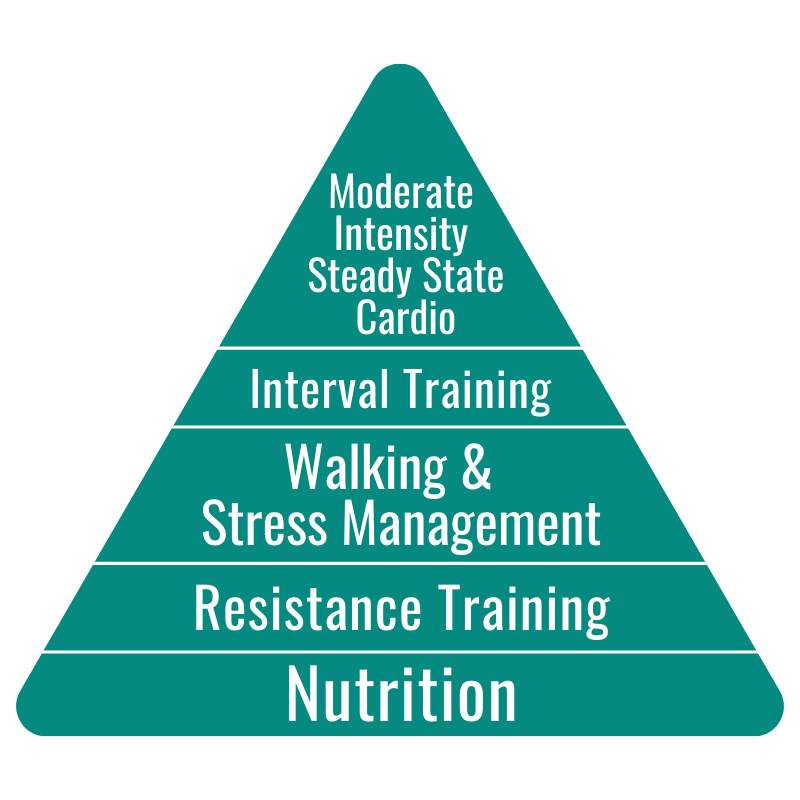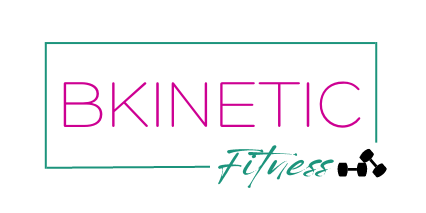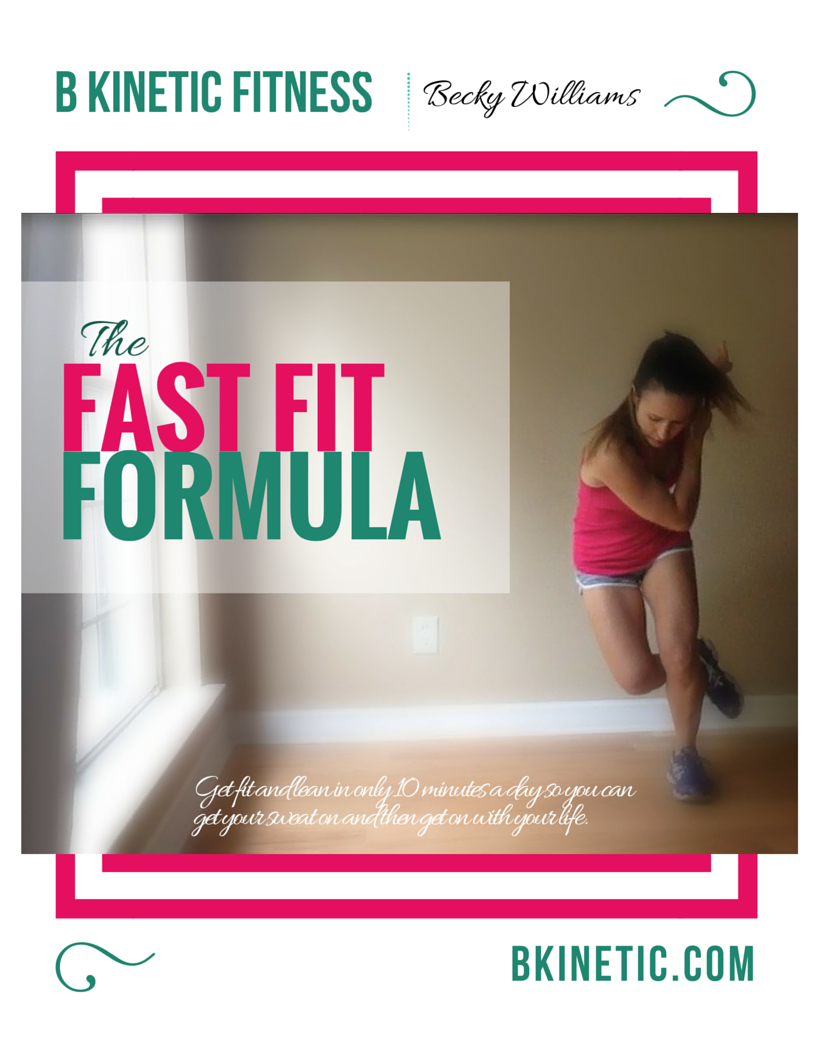During my early years in fitness, playing competitive soccer and running 5 and 10ks every other weekend, I thought more was better. I put in an hour-plus of cardio up to 6 days a week in addition to lifting for another hour or so. Although I enjoyed doing it (or at least I thought I did :-P), I thought I had to do as much as I could handle to get the results that I wanted.Reading any women’s magazine on the newsstand back then, and even now 15+ years later, could lead you to think the best path to fat loss is through lots and lots of cardio. But this kind of routine keeps us spinning our wheels, never quite getting the results that we want.
Although any kind of movement is good, there’s a definite optimal mix and order of effectiveness when it comes to losing fat and getting fit fast.
The pyramid below illustrates this order from the bottom up.

As we all know, nutrition and training are closely intertwined in fat loss. It’s hard to create and maintain body transformation without both. Nutrition is the foundation first and foremost. We can exercise all day long, but if we are taking in more calories than we burn. Then we’ll still struggle to lose weight. And if we exercise too much (especially cardio), our hunger and cravings will skyrocket and all but ensure we’ll eat more than we need. Which will cause us to think we need to exercise more to counteract the overeating. It’s a vicious cycle.
There must be a careful balance between the two in order to not only lose weight, but to keep it off in a sustainable manner.
Muscle is crucial to transforming the body, giving us the much sought-after “tight and toned” look. You can’t tone what you don’t have. So sparing muscle during a fat loss phase is of utmost importance. Consistent weight training ensures that less muscle tissue is used for fuel and that, hopefully, even more is built over time.
Secondly, the more muscle you have, the more calories you burn at rest. The “afterburn effect,” also known as EPOC (excess post-exercise oxygen consumption), also contributes to the increase in calories burned at rest. The body increases oxygen use after exercise to bring various processes back to baseline. This takes energy (calories). This effect occurs with weightlifting and high intensity interval training (HIIT). Making them potent fat-burners that work 24/7, not just during the workout itself. The exact amount is up for debate, but it can add up. At the very least, the benefit here is doing a more efficient workout, and I’m all for making our workout fits into our very busy lives.
Next up is stress management and leisure walking. Although stress has no calories, it can certainly make us gain stubborn weight. One of the stress hormones that surge during times of stress is cortisol.
Cortisol is like anything else in our bodies, it can be a negative or a positive force.
Most of us know it as a fat-storing hormone. However, it can also be a fat-burning hormone. We just tend to have too much of it in response to the chronic, daily stressors of modern living coupled with a lack of quality exercise, sleep, and nutrition.
Although acute elevations in cortisol help burn fat. Such as during high intensity interval-style exercise and strength training, excess prolonged elevations in cortisol can stimulate fat storage. It can also lead to muscle loss in the absence of muscle-building hormones (another great reason to lift weights!). Our hunger hormones can get out of whack as well. Ghrelin shoots up, increasing hunger, and leptin is suppressed, leaving us with a bottomless pit for a stomach.
Leisure walking is fantastic for stress management, especially if you do it outdoors.
It does burn a few calories, but more importantly, it activates our parasympathetic nervous system, slowing down our heart rate and increasing digestion (it’s also known as the “rest and digest system”).
And finally, we have moderate intensity steady state cardio at the top of our fat loss pyramid. This is what people usually start with, thinking that the more calories burned during exercise the better. This works for a while, but our bodies adapt quickly and burn fewer calories for the same amount of work. Booooo… And there’s a point at which it increases our appetites and cravings and has us chasing our tail trying to out-work our increasing caloric intake. This kind of cardio, done for long periods of time, is a stress on the body, which as mentioned earlier, isn’t good for fat loss.
If we’re speaking strictly in terms of efficient fat loss. Moderate intensity steady state cardio should be just a small part of the plan. Now, if you want to complete a 5k or triathlon or you just simply enjoy it, that’s a whole other story. But for fat loss, you’ll get further with weightlifting and interval training.
Now you have a good understanding of the fat loss hierarchy and where you should be putting the lion’s share of your time and effort.
The best thing you can do is start with this hierarchy and tweak as you go to find your perfect fat loss formula.

